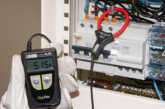
To support installers and technicians with the growing number of Power over Ethernet (PoE) applications, TREND Networks has published a new White Paper explaining the causes for DC Resistance Unbalance (DCRU).
The free White Paper, titled ‘What you need to know about DC Resistance Unbalance testing for PoE’ also explains how to test for DCRU and why testing should be best practice.
“When Power over Ethernet was first introduced, it is doubtful that the creators could have imagined how far the technology would be pushed in terms of the amount of power it would supply,” says Dan Barrera, Director of Product Innovation at TREND Networks. “The very first implementations provided just four watts, enough to power a nightlight. Today, PoE can supply more than 90 watts, enough to power a 75” flat panel TV.”
The result of this change is that an increasing number of devices in commercial applications are using Ethernet networks. Therefore, installers need to understand a number of different factors when troubleshooting. TREND Networks’ White Paper takes an in-depth look at how the issue of DCRU has been revealed through the standardisation of cabling to support PoE++. It explains the causes of DCRU and the negative effects it can have on cabling, Power Sourcing Equipment (PSE), and signal transmission.
“As PoE becomes a necessary part of every network, field testing should be performed to ensure the materials and the installation will support high power PoE without generating excess heat, thereby reducing the potential for problems further down the line,” says Dan.
While field testing DCRU is not currently required by the latest cabling standards, the White Paper suggests that it should be best practice, alongside the usual certification testing, for all cable installers.
However, DCRU testing is relatively new, so installers will likely need an up to date cable certifier, such as the TREND Networks LanTEK IV-S, which has a DCRU testing option.
“The results of DCRU can create data transmission issues, shorten the service life of power supplies, and reduce overall electrical efficiency. DCRU testing will ensure both the cabling and the installation workmanship is up to the task of supporting PoE to its fullest capability,” concludes Dan.
To download the ‘What you need to know about DC Resistance Unbalance testing for PoE’ White Paper, click here
Find out more about LanTEK IV-S cable certifiers or DCRU adapters for previous generation certifiers here








